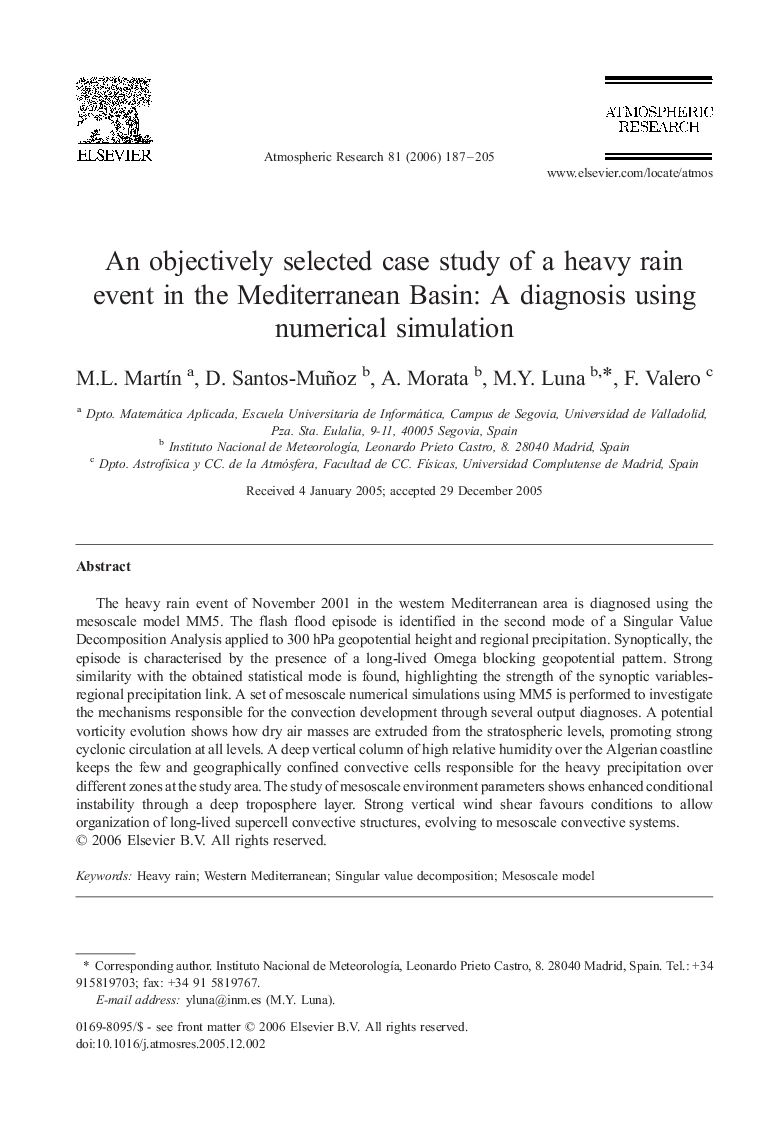| Article ID | Journal | Published Year | Pages | File Type |
|---|---|---|---|---|
| 4451527 | Atmospheric Research | 2006 | 19 Pages |
The heavy rain event of November 2001 in the western Mediterranean area is diagnosed using the mesoscale model MM5. The flash flood episode is identified in the second mode of a Singular Value Decomposition Analysis applied to 300 hPa geopotential height and regional precipitation. Synoptically, the episode is characterised by the presence of a long-lived Omega blocking geopotential pattern. Strong similarity with the obtained statistical mode is found, highlighting the strength of the synoptic variables-regional precipitation link. A set of mesoscale numerical simulations using MM5 is performed to investigate the mechanisms responsible for the convection development through several output diagnoses. A potential vorticity evolution shows how dry air masses are extruded from the stratospheric levels, promoting strong cyclonic circulation at all levels. A deep vertical column of high relative humidity over the Algerian coastline keeps the few and geographically confined convective cells responsible for the heavy precipitation over different zones at the study area. The study of mesoscale environment parameters shows enhanced conditional instability through a deep troposphere layer. Strong vertical wind shear favours conditions to allow organization of long-lived supercell convective structures, evolving to mesoscale convective systems.
